Bezoek Firenze in 2 dags
20 must-see POIs, geoptimaliseerde routes en anekdotes.
Kaart laden...
Je gaat de mooiste bezienswaardigheden van Firenze bezoeken







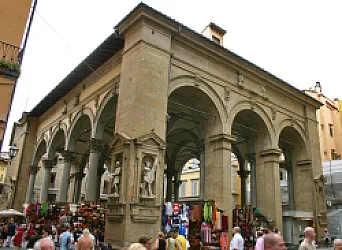
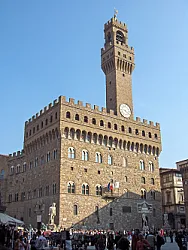
_01.jpg/320px-Loggia_del_grano_e_complesso_dell'ex-cinema_capitol_(2021)_01.jpg)
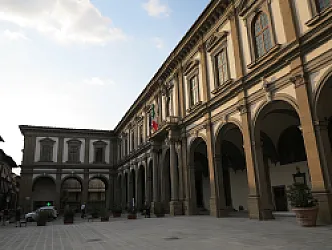





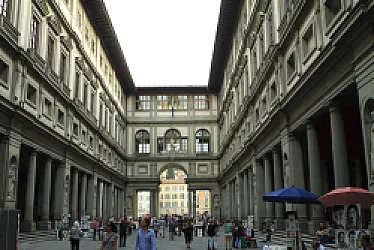
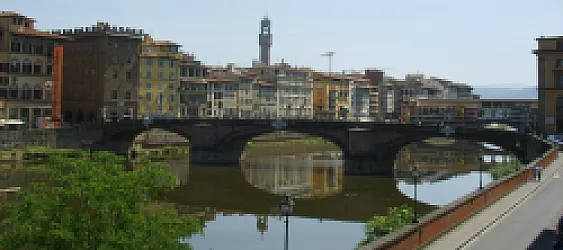
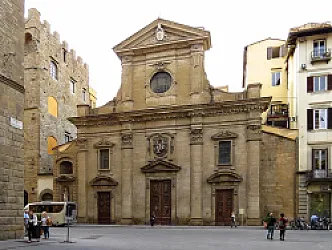
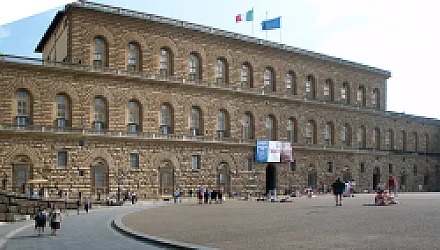
2 Days in Florence — A Whirlwind Love Letter to the Cradle of the Renaissance
Florence stole my heart the moment I stepped onto a sun-warmed piazza. The city feels like an open-air museum that still breathes and laughs. They call it the Cradle of the Renaissance, and that sounds grand because it is. Some people worry it's overrated, but Florence rewards curious travelers who linger. I visited with a small backpack and big expectations, and the city exceeded them in quiet, surprising ways.
Why visit? Because Florence is more than icons. It’s the clatter of espresso cups at dawn, the warm scent of fresh bread, and stone bridges glowing at sunset. Wander from the Ponte Vecchio across the Arno and you feel history underfoot. Stand before the Uffizi and your chest tightens with art’s presence. Climb near the Florence Cathedral and the city opens like a map of terracotta roofs. This is a city where every corner answers the question of what to see in Florence with beauty, texture, and a story.
Planning can feel overwhelming. You could spend weeks here and still miss tiny miracles. I get the pressure if it’s your first time in Florence and you want to do it all. That’s why I created this Florence itinerary for people who have limited time but big curiosity. Below I’ll show you exactly how to spend 2 days in Florence without rushing through the soul of the place. You’ll hit the essentials and discover small delights in between.
Key tip: Book major museum and Florence Cathedral tickets in advance and plan to start early. Early entry slices through crowds and gives you moments of quiet in places others only glimpse briefly. Timed tickets free up your afternoons for wandering alleys, tasting gelato, and lingering on bridges. Now let’s dive into the itinerary and make your two days in Florence feel like a proper love affair.

Quick Mini Guide to Florence
Where to stay:
- Duomo/Centro Storico — step outside to Florence Cathedral, Palazzo Vecchio and early-morning queues for Uffizi.
- Oltrarno — artisan workshops, quieter evenings, sunset strolls to Ponte Vecchio and Piazzale Michelangelo.
- Near Santa Maria Novella station — practical for train arrivals/departures without losing historic-centre access.
When to visit:
- Early morning for Uffizi and Duomo climb (less crowds, best light on frescoes and the city view).
- Golden hour at Ponte Vecchio and along the Arno — prime photo time and lively aperitivo scene in Oltrarno.
- Shoulder seasons (Apr–May, Sep–Oct) for fewer crowds and comfortable walking weather.
Things to do:
- Book Uffizi timed entry; linger at Botticelli and the Vasari Corridor views of the Arno.
- Climb Florence Cathedral’s cupola for panorama; visit Palazzo Vecchio’s tower and secret rooms.
- Stroll Piazza della Repubblica, then cross to Ponte Vecchio for artisan goldsmiths.
- Try interactive tours: Mates; Mess and Madness FLORENCE; The Alchemist FLORENCE for themed, local-led experiences.
Don't forget:
- Prebook Uffizi and Duomo tickets; expect cobblestones—wear comfortable shoes.
- Carry some cash for small ateliers and leather shops; respect quiet in churches and museum photo rules.
Dag 1 - Firenze
10 POIs te ontdekkenDag 1 - Ochtend à Firenze
5 Bezienswaardigheden - Duur : 3h45 - Afstand : 1.2 km - Wandelen : 0h15Palazzo Fenzi
- Palazzo Fenzi is een historisch gebouw dat tegenwoordig toebehoort aan de Universiteit van Florence en waar het Departement voor Geschiedenis, Archeologie, Geografie, Kunst en Performance (SAGAS) is gehuisvest.
- Het gebouw is ontworpen door Gherardo Silvani en de bouw begon in 1628-1630 voor de familie Castelli.
- Het onderging belangrijke architectonische en artistieke transformaties in de 17e en 18e eeuw, waaronder verschillende opmerkelijke fresco's, waarvan de werken van Sebastiano Ricci uit 1706-1707 enkele van de belangrijkste zijn.
- Een opmerkelijke ontwikkeling was de oprichting van een volledig onafhankelijk gebouw om de grote boekencollectie van Francesco Marucelli in onder te brengen.
- In 1783 werd het gekocht door de familie Brunaccini en in 1829 door Emanuele Fenzi, een prominente bankier en aannemer van de Leopolda-spoorlijn.
- Het is rijkelijk versierd, met een groot centraal poortportaal met groteske Satyrfiguren, werk van Raffaele Curradi uit 1634, en gebronsde manuscripten van schildpadden op de raamroosters op de begane grond.
Palazzo Niccolini
- Het Niccolini paleis, voorheen Ciaini-Da Montauto, was oorspronkelijk eigendom van de Ciaini da Montauto familie, een rijke familie uit de jaren 1300 dankzij de economische vaardigheden van Bastiano Ciaini. In de jaren 1500 bouwde Bastiano Ciaini het paleis waar al enkele oude huizen stonden, maar hij stierf kort na de voltooiing.
- In 1575 moesten de nakomelingen van Ciaini het familiepaleis verkopen aan Giovanni Niccolini, die een aanzienlijk bedrag betaalde voor het prestigieuze bouwwerk.
- Giovanni Niccolini renoveerde en breidde het paleis aan het einde van de eeuw aanzienlijk uit door een tweede binnenplaats toe te voegen aan de majestueuze gevel en door het gebouw te verrijken met schilderijen en muurschilderingen.
- Het paleis onderging talrijke eigendomsveranderingen en transformaties in de 20e eeuw, waaronder het gebruik als hoofdkwartier voor de fascistische partij, huisvesting voor Anglo-Amerikaanse troepen, hoofdkwartier van de Communistische Partij en nog veel meer.
- Tegenwoordig wordt het gebouw gebruikt als regionale rekenkamer van Toscane.

Monument voor generaal Manfredo Fanti, Florence
- Het Monument voor Generaal Manfredo Fanti herdenkt de Italiaanse generaal Manfredo Fanti (1806-1865), die een belangrijke rol speelde in de gevechten voor de Italiaanse onafhankelijkheid en eenwording.
- Het standbeeld werd gemaakt door Pio Fedi en werd opgericht in 1873.
- Het standbeeld staat voor het hoofdkwartier van het Koninklijke Militaire Commando, schijnbaar klaar om van zijn sokkel te stappen.
- Op de sokkel van het standbeeld staan twee marmeren bas-reliëfs: de ene stelt de oorlogswapens voor en de andere een gebeurtenis uit de Slag bij San Martino.
- De hoekfiguren symboliseren politiek, strategie, tactiek en vestingwerken.
- Het beeld toont Manfredo Fanti blootshoofds en kalend, een schril contrast met Fedi's gehelmde figuur van Pyrrhus in zijn andere meesterwerk, de Verkrachting van Polyxena.
- De inscriptie op de sokkel beschrijft Fanti's leven en benadrukt zijn liefde voor vrijheid, ballingschap in 1831, militaire opleiding in Spanje en zijn rol in het verenigen van Italië.
- Hij overleed op 5 april 1865.

Piazza della Santissima Annunziata
- Het Piazza della Santissima Annunziata heeft zijn naam al sinds de tweede helft van de 13e eeuw, in verband met de primitieve kerk die in dezelfde periode werd gesticht door de Servi di Maria.
- Het plein wordt beschouwd als een architecturaal model van stedenbouw uit de Renaissance, met een uniform karakter onder de Florentijnse pleinen en vertegenwoordigt het best de idealen van de stad tijdens de Renaissance.
- De basiliek van Santissima Annunziata, één van de belangrijkste heilige gebouwen in Florence, domineert het plein.
- In het midden van het plein staat het ruitermonument voor Ferdinando I de' Medici, voltooid door Pietro Tacca, met twee fonteinen met zeedieren, meesterwerken van Tacca en maniëristische beeldhouwkunst.
- Het plein met zijn basiliek heeft sinds zijn oprichting verschillende uitbreidingsfasen ondergaan, waarbij enkele van de grootste renaissancearchitecten betrokken waren en die hebben geleid tot zijn huidige harmonieuze stilistische uiterlijk.
- Vandaag de dag is het plein het middelpunt van verschillende stadsfeesten en markten, in het bijzonder de Aankondiging van de Maagd Maria (25 maart) en de Geboorte van Maria (8 september).
Palazzo Dardinelli-Fenzi
- Het Palazzo Dardinelli-Fenzi werd eind 16e eeuw gebouwd voor de familie Dardinelli.
- De gevel staat bekend om zijn uitbundige graffiti.
- De architect van het gebouw was Santi di Tito.
- Het wapen van de familie Dardinelli bevindt zich in het midden van de gevel.
- Het wapen van de familie Fenzi, die het in de 19e eeuw kocht, staat ook hoger op het gebouw.
- De familie Fenzi combineerde het met hun andere grote familiepaleis.
Dag 1 - Middag à Firenze
5 Bezienswaardigheden - Duur : 3h00 - Afstand : 1.1 km - Wandelen : 0h14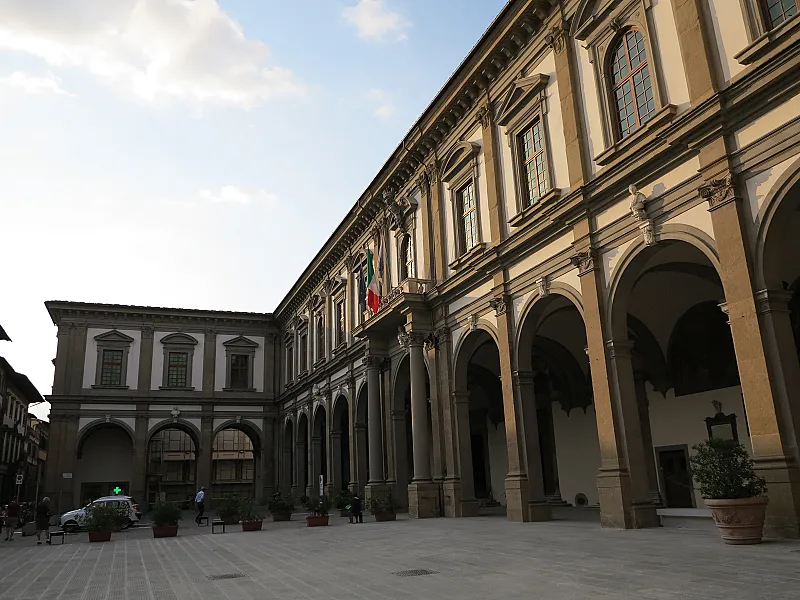
Hospital of Santa Maria Nuova
- Het Santa Maria Nuova ziekenhuis in Florence, Italië, is een van de oudste functionerende ziekenhuizen in de stad.
- Het werd opgericht tussen 1285 en 1288 en biedt plaats aan ongeveer 2000 patiënten.
- Het werd opgericht door Folco Portinari, de vader van Beatrice Portinari, die door Dante Alighieri werd geïdealiseerd in zijn werken.
- Monna Tessa, een dienares van de familie, haalde Portinari over om het ziekenhuis in 1285 te bouwen.
- In de loop der jaren groeide het ziekenhuis dankzij donaties van de burgers.
- Sommige van de meesterwerken die het ziekenhuis sierden, werden overgebracht naar nabijgelegen musea, zoals het Nationaal Museum van San Marco.

San Michele Visdomini
- De kerk van San Michele, ook bekend als San Michelino Visdomini, is een katholieke gebedsplaats waarvan de huidige bouw begon in 1364.
- De kerk herbergt verschillende kunstwerken zoals de pales van Poppi, Empoli en Passignano, en Pala Pucci, een meesterwerk van Pontormo, gemaakt in 1518.
- De kerk onderging grote renovaties na de komst van de Celestijnse monniken, waarbij nieuwe kapellen werden gemaakt en de ingang werd verplaatst naar een klein plein.
- De overstroming van 1966 beschadigde de kerk ernstig.
- Tijdens de restauratie werden resten van fresco's uit de 14e eeuw ontdekt in het dwarsschip.
- Volgens een plaquette op de kerkgevel werd de beroemde schilder Filippino Lippi in de kerk begraven.
- De kerk heeft één schip met zijaltaren en een dwarsschip dat uitkomt op nog twee kapellen en een centrale kapel.
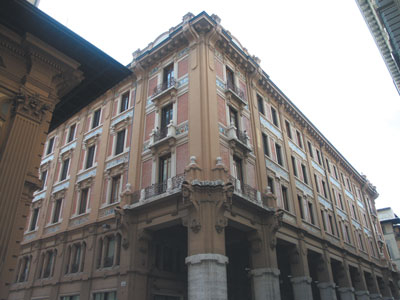
Palazzo Pola e Todescan
- Palazzo Pola e Todescan, ook wel bekend als casa Paggi, is een burgerlijk gebouw dat tussen 1901 en 1903 werd gebouwd door bouwbedrijf Fratelli Taiuti op basis van de ontwerpen van Giovanni Paciarelli.
- Oorspronkelijk herbergde het gebouw een groot warenhuis, gespecialiseerd in de verkoop van betaalbare goederen.
- Nu is er voornamelijk een bank gevestigd en vanaf 2021 een restaurant dat is geïnspireerd op de keuken van Sofia Loren.
- De architectonische stijl van het gebouw, ontworpen door Paciarelli, is een mix van de opkomende Liberty-stijl en de 19e-eeuwse stijl, met een imposante massa versierd met gebeeldhouwde protomes, gekleurde keramische friezen en smeedijzeren werken.
- Het gebouw strekt zich uit over drie verdiepingen na de begane grond, met colonnades met travertijnbekleding op de begane grond en een tussenverdieping.
- De ruimtes op de begane grond zijn voorzien van grote etalages.
- De versiering van het gebouw, met keramische spiegels en balkons versierd met mannelijke en vrouwelijke protomes, breekt met de traditionele bouwstijlen van de 16e en 17e eeuw.
- Ondanks de aanvankelijke kritiek voor het afwijken van de traditionele bouwstijlen, wordt dit gebouw nu geroemd als een vroeg voorbeeld van de penetratie van de modernistische stijl in het oude centrum van de stad.

Statue of Giovanni delle Bande Nere
- Het monument voor Giovanni delle Bande Nere werd in 1540 in opdracht van Cosimo I de' Medici gemaakt door Baccio Bandinelli.
- Het beeld zou oorspronkelijk in de Neroni-kapel in de San Lorenzo-basiliek moeten hebben gestaan, wat de afgebeelde krijger bovenop de sokkel verklaart. ⌛ Ondanks een aanvankelijke deadline van twee jaar werd het werk niet voltooid voor Bandinelli's dood in 1560.
- De basis van het monument werd in 1812 door Giuseppe Del Rosso omgebouwd tot een fontein voor openbaar gebruik.
- Het standbeeld werd pas in 1850 op zijn huidige plek gezet onder leiding van ingenieur Alessandro Manetti.
- Het monument onderging verschillende restauraties en renovaties, waarvan de meest recente plaatsvond in 2012.
Porte de la Mandorle
- �� De bouw van de Mandorla deur werd tussen 1391 en 1423 uitgevoerd door verschillende beeldhouwers, waaronder Giovanni d'Ambrogio, Donatello en Nanni di Banco.
- De beelden van de deur zijn belangrijk in de kunstgeschiedenis omdat ze werden gemaakt tijdens de overgang tussen de laatste Gotische fase en de vroege Renaissance.
- Het was de laatste zijdeur die werd gebouwd en wordt beschouwd als de mooiste van alle vier.
- Tussen 1489-1490 werd het Annunciatiemozaïek in de lunet voltooid door kunstenaar David Ghirlandaio met hulp van zijn beroemdere broer Domenico.
- Het portaal onderging een ingrijpende restauratie, die begon in 2002 en werd afgerond op 5 juni 2012.
- Het thema van de sculpturale decoratie is de Maagd Maria en haar reddingsmissie voor de mensheid, met als belangrijk onderdeel de overhandiging van de cinch tijdens haar hemelvaart (het reliëf van de top).
- Het portaal is versierd met plantenversieringen in bas-reliëf op de halfzuilen, het kruisstuk en de archivolt.
Dag 2 - Firenze
10 POIs te ontdekkenDag 2 - Ochtend à Firenze
5 Bezienswaardigheden - Duur : 3h30 - Afstand : 0.9 km - Wandelen : 0h11
Piazza della Repubblica
- Piazza della Repubblica markeert de plaats van het stadsforum in de Romeinse tijd.
- Het plein werd heringericht tijdens het "Risanamento" project (tot 1895), in de periode dat Florence de hoofdstad was van het Koninkrijk Italië.
- Middeleeuwse torens, kerken en paleizen werden afgebroken om plaats te maken voor nieuwe gebouwen in een poging om de stad en haar economie te moderniseren.
- Tijdens deze transformaties werden archeologische overblijfselen ontdekt, waaronder de overblijfselen van Romeinse baden en gebouwen.
- De Zuil van Overvloed is het enige overblijfsel van het oude Piazza del Mercato Vecchio.
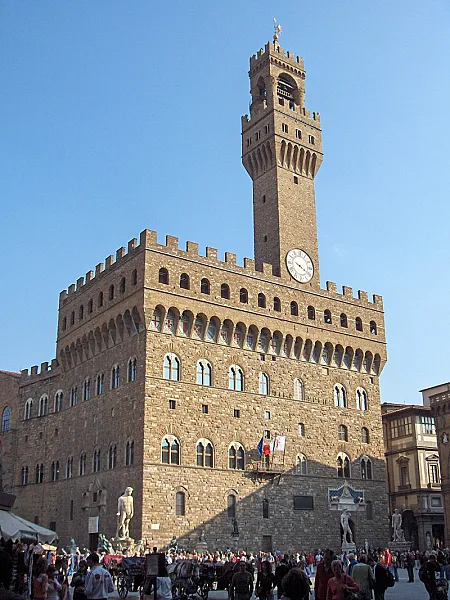
Palazzo Vecchio
- Palazzo Vecchio is een iconisch gebouw waarin de kantoren van het stadhuis van de stad zijn gevestigd en dat openstaat voor het publiek als museum.
- Het gebouw staat bekend om zijn iconische Arnolfo-toren.
- Palazzo Vecchio diende als residentie van Cosimo I. de Medici en was de regeringszetel toen Florence tussen 1865 en 1871 de hoofdstad van het Koninkrijk Italië werd. de Medici en was de zetel van de regering toen Florence tussen 1865 en 1871 de hoofdstad werd van het Koninkrijk Italië.
- Het interieur van het paleis herbergt een indrukwekkende collectie kunstwerken, waaronder muurschilderingen, schilderijen en beeldhouwwerken.
- Palazzo Vecchio heeft ook een indrukwekkende binnenplaats en een klokkentoren, die in het verleden als gevangenis werd gebruikt.
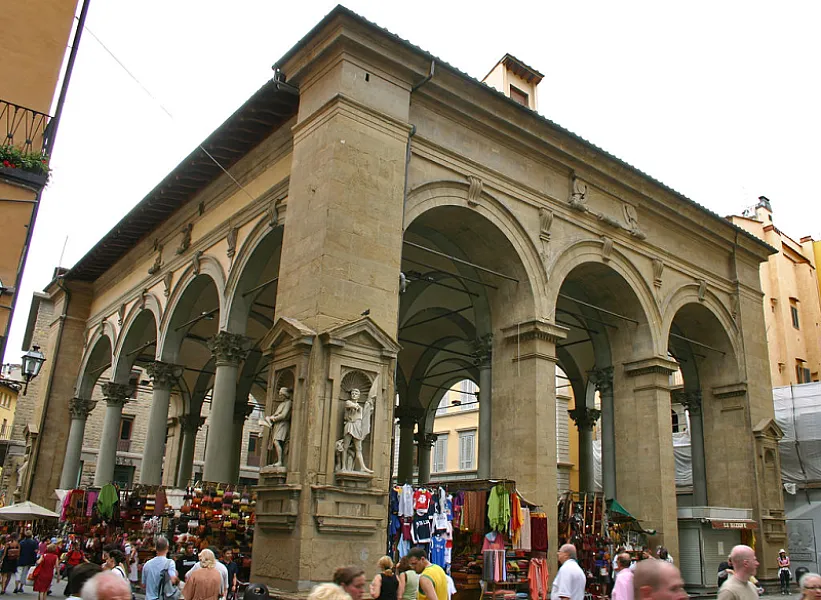
Loggia del Mercato Nuovo
- �� Deze loggia, ook bekend als de "Porcellino" vanwege de beroemde nabijgelegen fontein, dateert uit de 16e eeuw.
- Het is beroemd als plek waar lederwaren en souvenirs worden verkocht, waardoor het een populaire winkelbestemming is.
- De nabijgelegen fontein toont een wild zwijn en is een iconisch symbool van de stad.
- De loggia heeft renaissancearchitectuur met zuilen en bogen die in de loop der tijd zijn onderhouden.

Orsanmichele
- �� De kerk van Orsanmichele was oorspronkelijk een schuur, maar werd in de 14e eeuw omgebouwd tot kerk.
- De kerk heeft een indrukwekkende gevel en een reeks beelden in de nissen.
- De naam "Orsanmichele" is afgeleid van "Orto di San Michele", wat "Boomgaard van St.
- Michael", verwijzend naar zijn oorsprong als graanschuur.
- Binnenin herbergt de kerk een collectie opmerkelijke beeldhouwwerken en schilderijen, waaronder werken van vooraanstaande kunstenaars.
- Door de geschiedenis heen heeft de kerk gediend als een plaats van aanbidding en gebed.
_01.jpg)
Loggia del Grano
- La Loggia del Grano in Florence staat op de lijst van nationaal artistiek erfgoed, volgens een lijst die in 1901 werd opgesteld door de Direzione Generale delle Antichità e Belle Arti.
- De loggia werd van oudsher gebruikt als graanmarkt, waar dagelijks graan werd gekocht en verkocht onder toezicht van de "Ufficiali della Grascia" die zorgden voor de kwaliteit, hoeveelheid en regelmatigheid van de prijzen.
- Het oude Florentijnse gezegde "a tutto spiano" (met totale overvloed) is verbonden met de loggia, aangezien "spiano" de maat was voor het graan dat elke maand aan de bakkers werd toegewezen, als er geen producttekorten waren.
- De huidige structuur werd in 1619 gebouwd door architect Giulio Parigi, in opdracht van Groothertog Cosimo II, ter vervanging van de vorige structuur die niet meer voldeed aan de behoeften van de stad.
- Tegen 1690 verloor de loggia zijn oorspronkelijke rol en onderging verschillende transformaties.
- Het werd gebruikt als drukkerij, de redactie van de krant Il Monitore Toscano en werd zelfs omgebouwd tot theater door architect Andrea Scala, in opdracht van acteur Tommaso Salvini.
- Vanaf 14 december 2022 werd de loggia de locatie van het warenhuis Coin, nadat het begin jaren '90 werd gebruikt als etnografische markt, restaurant en boekenkraam in de openlucht.
Dag 2 - Middag à Firenze
5 Bezienswaardigheden - Duur : 4h15 - Afstand : 1.6 km - Wandelen : 0h21
Ponte Vecchio
- �� Ponte Vecchio is een van de oudste bruggen van Europa en heeft een geschiedenis die teruggaat tot de Middeleeuwen.
- Vanaf de brug kun je genieten van een panoramisch uitzicht op de rivier de Arno en andere bruggen in Florence.
- De brug staat bekend om zijn middeleeuwse architectuur en om de vele juwelierszaken en ateliers die er gevestigd zijn.
- De winkels langs de brug bieden juwelen en luxe artikelen, waardoor het een exclusieve winkelbestemming is.
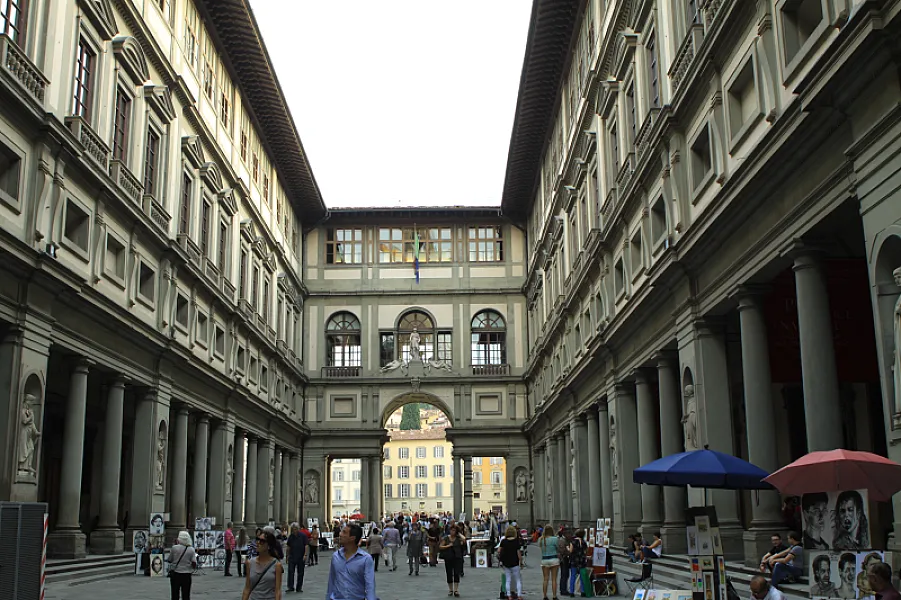
Uffizi
- �� De Uffizi Galerij, opgericht in 1584, is een van de oudste en meest prestigieuze musea van Italië.
- Het herbergt een indrukwekkende collectie renaissance- en barokkunst, met meesterwerken van kunstenaars als Botticelli, Michelangelo, Leonardo da Vinci en vele anderen.
- Het is een schatkamer voor liefhebbers van kunst en kunstgeschiedenis, met een breed scala aan schilderijen, beeldhouwwerken en decoratieve kunst.
- Vanuit sommige ramen van de Uffizi Galerij kunt u genieten van een panoramisch uitzicht over Florence en de rivier de Arno.
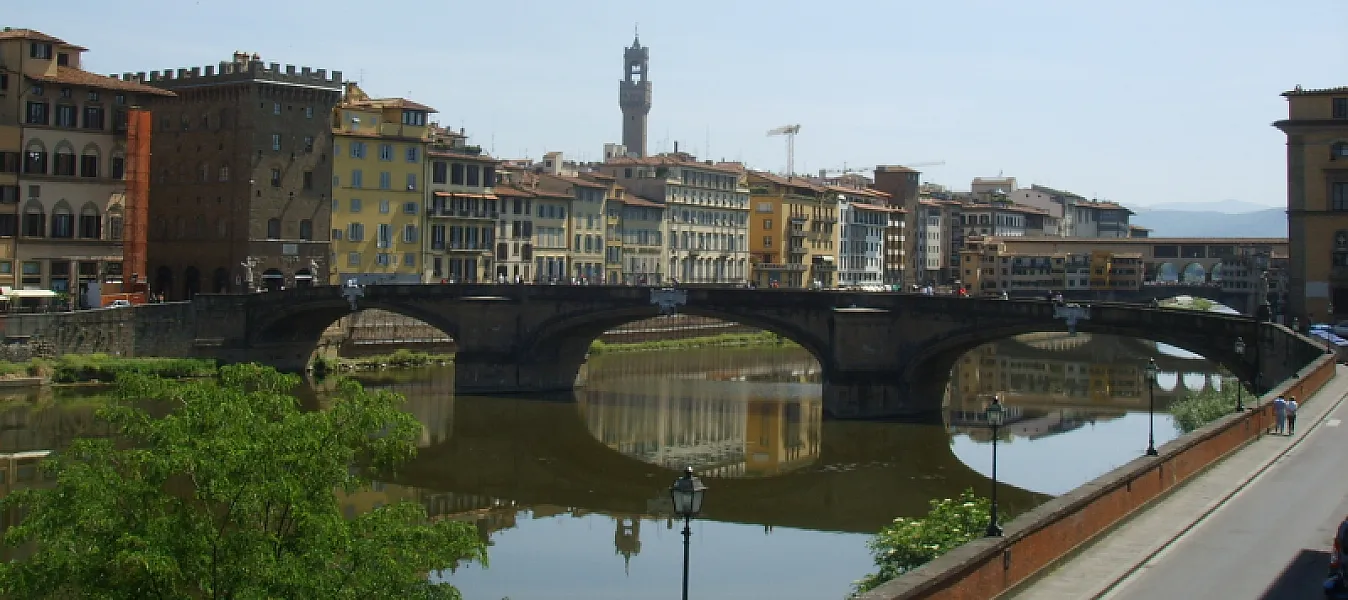
Ponte Santa Trinita
- �� Santa Trinita Bridge werd gebouwd in de 16e eeuw en is een indrukwekkend voorbeeld van renaissance-architectuur.
- De brug staat bekend om zijn elegante architectonische ontwerp, met drie bogen die weerspiegelen in het water.
- Vanaf de brug kunt u genieten van een panoramisch uitzicht op de rivier de Arno en andere Florentijnse monumenten.
- In de lente en zomer is de brug versierd met bloemen, wat de brug een extra charme geeft.
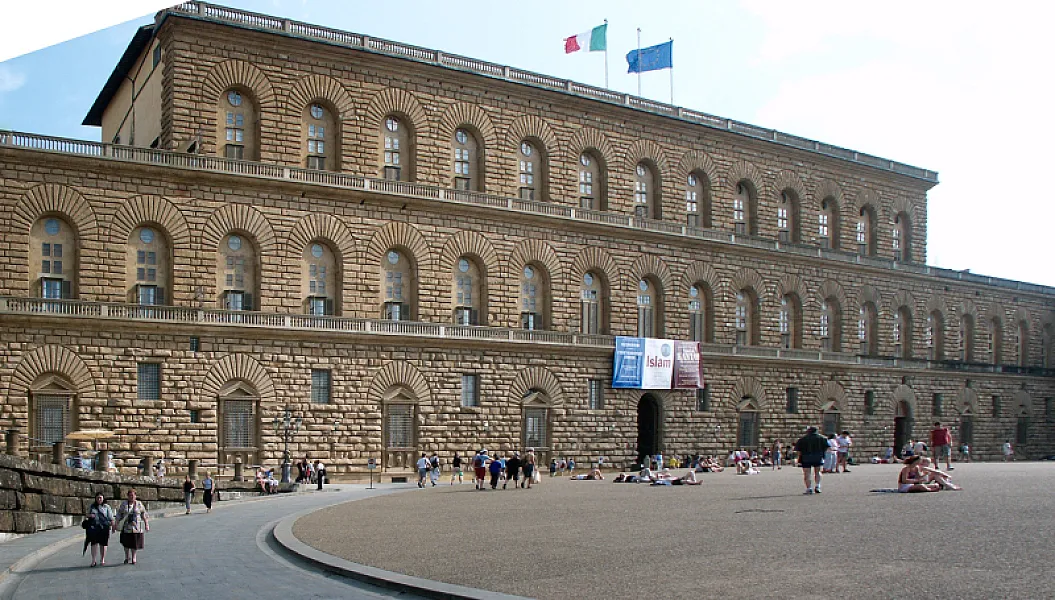
Palazzo Pitti
- �� Palazzo Pitti, gebouwd in de 15e eeuw, is getuige van de geschiedenis en het koningschap van Florence.
- Met zijn imposante gevel en tuinen toont het een indrukwekkende Italiaanse renaissancestijl.
- De prachtige Boboli-tuinen, die deel uitmaken van het complex, bieden een unieke natuurervaring.
- Het paleis herbergt verschillende kunstgalerijen met meesterwerken van beroemde schilders als Titiaan en Rafaël. de tuinen kunt u genieten van een adembenemend panoramisch uitzicht over Florence.
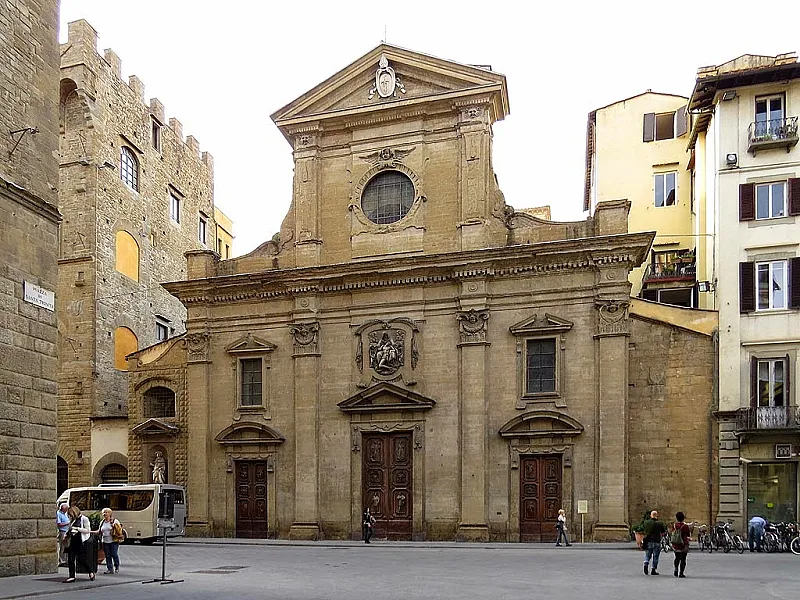
Santa Trinita
- �� Deze kerk in gotische stijl werd gebouwd in de 13e eeuw en staat bekend om haar geschiedenis en haar connectie met de Orde van Minderbroeders.
- De kerk heeft een elegante klokkentoren die deel uitmaakt van de skyline van Florence.
- Het herbergt een indrukwekkende collectie heilige kunst, waaronder schilderijen en beeldhouwwerken van vooraanstaande kunstenaars.
- De kerk is door de eeuwen heen van groot religieus belang geweest en is vandaag de dag nog steeds een plaats van aanbidding.
- Naast de historische en artistieke waarde is de kerk nog steeds een plaats waar religieuze diensten worden gehouden.
Where to Stay in Florence
When you only have two days in Florence, location is everything: it determines how much of the city you see and how relaxed each day feels. Staying close to the core means you’ll spend more time enjoying masterpieces and less time on transit. Choose a base that keeps your walking between museums, cafés and squares short—Florence’s compact center rewards slow, on-foot exploration, so a well-placed room can turn a frantic itinerary into a pleasant stroll.
The city is organized around the river and the cathedral, with a dense medieval grid at its heart. The Arno splits the historical center, and most highlights cluster on or near the north bank. If you want to orient yourself quickly, think in terms of the river, the cathedral dome and the main piazzas. From a central point you can reach the Ponte Vecchio and the Uffizi in minutes, and the glorious silhouette of the Duomo is a useful visual landmark to navigate by as you move between sights.
For an immersive short stay, pick neighborhoods that put your top priorities within easy reach. If you want to wake up steps from medieval bridges and sunset views, stay near the river and the Ponte Vecchio. Art lovers who want early access to galleries will appreciate places within a short walk of the Uffizi and the Piazza della Repubblica, which keeps you centrally placed for both museums and lively cafés. Across the Arno, the Oltrarno quarter offers a quieter, artisan feel in the evenings without sacrificing proximity to the principal attractions.
Transport in Florence is simple: most visitors rely on walking supplemented by short tram, bus or taxi rides. The Santa Maria Novella train station sits just outside the historic core and is the easiest arrival point if you come by train; a direct tram now connects the center with the airport. Taxis are useful for luggage or late returns, but for two days you’ll likely find walking the most efficient—and the most pleasurable—way to move between the Duomo, museums and riverside.
Finally, be practical about the quirks of historic buildings: many charming accommodations occupy older palazzi with narrow staircases, so if stairs are an issue ask about lifts. In summer seek air-conditioning and in colder months confirm heating. Prioritize a location that reduces daily transfers rather than extra bells and whistles—comfort and proximity will make your short Florence visit feel unrushed and truly memorable.
Getting Around Florence
Florence feels smaller than you imagine, and that makes public transport delightfully straightforward: a compact center you can often walk, plus a modern tram and bus network for longer hops. The city runs the Tramvia lines and the local buses operated by ATAF, with clear stops, readable timetables, and drivers who are used to tourists. If you're comfortable reading signs and following a simple route, you’ll find that traveling from a train at Santa Maria Novella to a museum or piazza is low-stress and fast — and even the trams have space for bags so airport-to-center transfers are easy. 🚇
One very practical tip: always buy and validate your ticket before you ride. Tickets are sold at tabacchi, newsstands, machines at stops, and via the official ATAF app; validation machines are on board buses and at tram stops. A single ticket (usually affordable and valid for about 90 minutes) will cover transfers inside that time window, and there are day or multi-day passes if you plan many trips. Remember that the Firenze Card covers museums, not transport, so keep a separate ticket for buses and trams. 🎫
Use Google Maps or your preferred map app to plan door-to-door routes: it reliably shows walking time between the Ponte Vecchio, the Uffizi, and Piazza della Repubblica, plus which bus or tram to catch if you prefer not to walk. The app gives real-time departures and step-by-step walking directions, so you can choose scenic routes through the Oltrarno or the fastest path if you're short on time. I check it before leaving a café and it almost always points me to the best option for that moment.
To save money, walk when you can — many of the main attractions are a short stroll from each other — and buy a day pass only if you’ll take several long rides or a transfer to the airport. The tram to the airport is a fraction of a taxi fare and extremely convenient, while afternoon sightseeing on foot keeps your costs down and helps you stumble on alleys and shops you’d otherwise miss.
I remember arriving by train, buying a ticket at a newsstand, validating it, and walking from Santa Maria Novella to Piazza della Repubblica; from there we popped into the Uffizi and strolled over the Ponte Vecchio in less than 15 minutes — no transfers, no fuss. If your legs get tired, hop a tram or bus for one stop; the system is there to make your exploration feel effortless, and once you try it you'll feel like a local in no time. 🗺️
What to Pack for Florence
Florence is a city you explore on foot: the Duomo, winding streets, and those famous stone bridges invite hours of wandering. I’ve done days where I walked 12–15 miles (yes, my feet still remember), so I pack light but smart. Below are the essentials I bring on a 48-hour trip — practical, tested, and focused on comfort and convenience while admiring Renaissance architecture and crossing the Ponte Vecchio.
1. Comfortable walking shoes (required): Bring broken-in sneakers with good arch support — I wear New Balance 574s or leather Ecco sneakers. On my last visit I was out for 10+ hours and walked roughly 14 miles; blisters would have ruined the day. Cobblestones and uneven pavement make cushioning and a non-slip sole essential.
2. Cross-body bag (anti-theft): A small, zippered cross-body with RFID pocket kept my phone and passport safe when I stopped to photograph the Arno. Pickpockets can target crowded viewpoints and bridge sidewalks, so having your hands free and valuables snug against your body matters — I learned this after someone brushed past me near Ponte Vecchio.
3. Weather-appropriate layers: Florence days can swing — sunny afternoons and cooler evenings. I pack a light merino or cotton layer, a thin packable rain jacket, and a scarf. On one spring evening it dropped 10°C, and that scarf saved me while sipping wine on a terrace overlooking the skyline.
4. Power adapter (Italy: Type C/F/L, 230V): Cameras and hair straighteners need the right plug. I carry a small universal adapter so my phone and camera batteries don’t die before sunset shots of the piazzas. I once had to hunt a hostel desk for an adapter at 11pm — avoid that stress.
5. Power bank (10,000 mAh): A compact 10,000 mAh power bank kept my phone charged through a full day of navigation, photos, and audio guides — useful when I was out exploring architecture and bridges for 9–12 hours straight. Choose one charged to at least 80% before you leave the hotel each morning.
6. Optional — Collapsible water bottle & compact umbrella: Florence’s summer sun and occasional showers make a reusable bottle handy (I refilled at fountains) and a tiny umbrella fits a day bag. Both saved me money and discomfort on a rainy afternoon when I ducked into a café and waited out a sudden shower.
Enjoy Your Trip to Florence!
In two days you'll explore 14 highlights of Florence, packed with art, architecture and charm. From the golden span of Ponte Vecchio to the masterpieces of the Uffizi and the lively Piazza della Repubblica, this itinerary gives you everything you need to taste the city's soul and hit its most iconic spots with confidence and joy.
Remember, this is a GUIDE, not a strict schedule: treat it as a map of possibilities. Try to leave room for the unexpected — the real magic often happens when you wander, get delightfully lost down a cobbled lane, stumble on a tiny church, or pause for a spontaneous café stop. Don't feel pressured to see EVERYTHING; soak in moments instead of racing through them.
I hope you fall for Florence's light, flavor, and stories. I'm excited for you — you're going to have an amazing time exploring cathedrals, bridges and museums, meeting locals, and creating unforgettable memories. Embrace slow strolls, hearty meals, and little surprises; they'll be the moments you remember long after the postcards fade.
Want to explore in a playful way? Check out our Coddy tours—Mates, Mess and Madness FLORENCE, and The Alchemist FLORENCE—fun, gamified walks that turn discovery into a game. They’re a great option to add energy and stories to your two-day adventure.
Have fun exploring every corner of Florence — and if you want, tell me about your favorite discovery or ask a question before you go. Safe travels!
Wil je meer avontuur?
Ontdek onze stedelijke escape games om je bezoek om te toveren tot een interactief avontuur!













